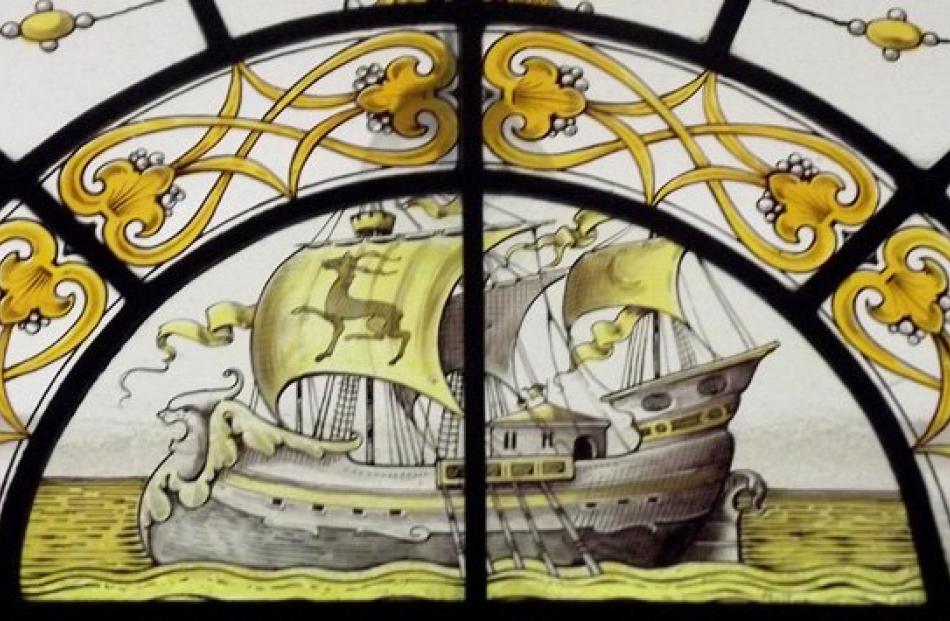The ships featured in several stained-glass windows at Olveston are symbolic of the Theomin family’s connection to trade and commerce, writes Jenny Longstaff.
Images of ships feature in several stained-glass windows at Olveston, the Theomin family’s historic home. The antique style of these vessels is such that they would never have sailed up Otago Harbour, but they do symbolically indicate David Theomin’s connection to trade and commerce — how he generated his wealth. The importance of Dunedin as a harbour city, with ready access to a shipping port, was a factor in Theomin’s business success as a merchant of imported goods, from musical instruments to Japanese artefacts.
Until commercial aviation became affordable, everyone and everything had to travel by ship. Not only business, but personal lives, cultural connections, major purchases, mail, overseas holidays — all were dictated by shipping schedules.
Theomin was part of "The Tartan Mafia", prominent figures in Dunedin’s business community. As president of the Otago Chamber of Commerce, he represented the Chamber at the inauguration of the Commonwealth of Australia in 1901 and also at the Coronation of King Edward VII in 1902.
An interesting item in the Olveston collection is an illuminated address presented to C.W.S. Chamberlain,
when he retired after many years of service as Customs collector in which position he was responsible for collecting tariffs, controlling the flow of goods, supervising bonded stores and facilitating trade expansion. In part, the address reads: "Upon the occasion of your retirement, after having filled the position of Collector of H.M. Customs at the Port of Otago for over twenty years, the commercial community of Dunedin desire to express their appreciation both of your high personal character and of the manner in which you have discharged the onerous and difficult duties of your office."
The address concludes with the words "a memento of the personal regard in which you are held by those connected with the mercantile and shipping interests of Dunedin".
This illuminated address is an item of great beauty, with the front cover illustrated by Robert Hawcridge, a versatile artist who was chief designer for printers J. Wilkie and Co. before he became master at the Dunedin School of Art in 1910. Mary Eleanor Joachim’s skill in the art of fine leather bookbinding completed the address, using red morocco with green leather inlay and gold tooling in flower and leaf scroll design.
- Jenny Longstaff is a tour guide and educator at Olveston historic home.















